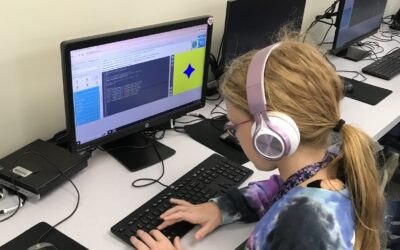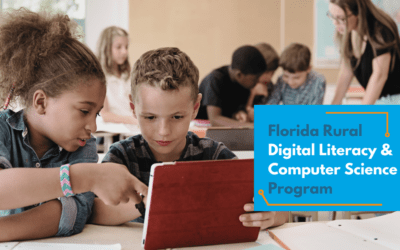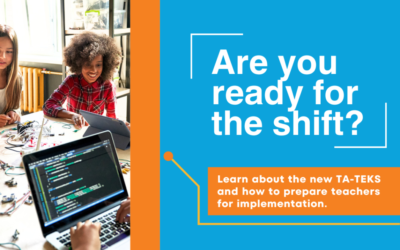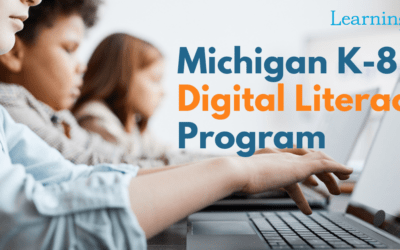Computational thinking has become important to teaching problem solving in education because it empowers students with processes to develop strategic solutions to complex problems, essentially “leveling up” their skills, or creating algorithms that can make future processes more effective. This enables students to take on more complex challenges and prepare for real-world applications.
Decomposition in Computational Thinking
While the process of computational thinking is multifaceted, there is one key to computational thinking that is essential for success: decomposition. Decomposition is the process of breaking a complex task or problem into smaller, more manageable pieces. From this decomposition, students can eliminate unnecessary information, identify patterns and begin the process of identifying which parts of the problem are most important, how to solve or complete each step, and how those parts can be put together for a clear and unified step-by-step solution.
Why is the Decomposition Technique Required in Computational Thinking?
The technique of decomposition is required in computational thinking because it breaks complex tasks into subtasks while developing a sequentially-based understanding of the problem. This allows unnecessary information to be discarded, patterns to be identified, relevant information to be extracted and the process of step-by-step resolution to be defined for a more effective problem-solving process.
By definition, computational thinking is the process of tackling complex problems and finding a clear, step-by-step solution that can be replicated. Decomposition, therefore, is essential to this process as it includes breaking a task into several sub-tasks, helping to align the task to a step-by-step solution.
Another reason decomposition in computational thinking is important is because it allows each subtask to be examined more closely. This not only helps to categorize information as essential or non-essential, but also empowers the problem-solver with a better ability to analyze each specific part of the task or challenge to more effectively develop a reasonable solution.
Examples of Decomposition in Computational Thinking
Below are some real-world examples of utilizing decomposition in computational thinking:
- You have to clean your house. Instead of facing the task as a whole, you practice decomposition by breaking the task into a to-do list with multiple subtasks.
- To build shelves for a storage space, you practice decomposition by measuring the space, creating a blueprint or plan to determine the size of the shelves and the materials you need to accomplish the task. Next, you purchase the supplies and cut the lumber to size, then install one wall of shelves at a time.
- In science, to prove or disprove a hypothesis, you practice decomposition by creating subtasks including background research, observation, generating a hypothesis, determining which variables to test, performing experiments and drawing a conclusion.
Final Thoughts
Consider how often computational thinking appears in your everyday life. Do you naturally use decomposition and computational thinking to resolve a challenge? For more information about computational thinking and how they apply to students, explore some of our most recent articles:
Digital Citizenship in Education: What It Is & Why it Matters
In education, digital citizenship helps prepare students to use technology ethically, responsibly and effectively. Here’s why it matters.
Strategies to Meet TA-TEKS Standards in Texas
Proclamation 2024 represents a significant advancement in educational standards in Texas. This article outlines effective strategies for schools to meet these standards.
Ideas for Applying Digital Literacy Outside the Technology Classroom
To apply digital literacy effectively, teachers should integrate technology into their curriculum in a meaningful way. Here are some ideas.
What the History of Personalized Learning Teaches Us About It Today
Personalized learning is an educational approach that tailors instruction to meet the unique needs and progress of each individual learner. It goes beyond traditional one-size-fits-all teaching methods, utilizing technology, data and flexible instructional strategies...
Florida Teachers Discuss Teaching Coding in Middle School
Computer coding is becoming an increasingly popular class for middle and high schools to offer. To date, 41 states have adopted K-12 computer science policies and, according to a 2023 report by Code.org, over 57% of public high schools in the U.S. offer foundational...
What is Future Readiness for 21st Century Citizenship?
Future readiness in education refers to the intentional preparation of students for the dynamic and evolving challenges of the future. It takes a holistic position, going beyond traditional academic skills, to emphasize the development of critical thinking,...
Florida Offers Digital Literacy & Computer Science Program to Rural Schools
Florida’s Lafayette County School District and Learning.com have partnered to launch the Florida Rural Digital Literacy & Computer Science Program. Demonstrating its commitment to digital equity, the Florida Department of Education is funding both digital literacy...
What Does Effective Typing Software Look Like?
The importance of keyboarding instruction in elementary classrooms is well established. And with a plethora of typing software to introduce students to this vital skill, elementary school teachers can easily implement typing instruction within their classrooms. But...
The Connection Between Keyboarding and Literacy Skills
Literacy skills typically refer to the ability to read and write, and, more traditionally, refer to doing so with pen and paper. However, as more of the world’s communication moves to digital technologies, the definition of literacy also expands. How Keyboarding...
What the New TA-TEKS Mean for Texas
In the ever-evolving world of education, staying ahead of the curve is crucial, especially when it comes to preparing our students for the future. With the 2022 adoption of the TA-TEKS, there is a shift on the horizon for computer science and technology applications...
The Role of Schools in Promoting Online Safety for Children
There’s no question that the internet has taken an increasingly central role in our daily lives, encompassing not only our work, but also social interactions, home responsibility, entertainment, education and more. This article explores the significant role schools...
Empowering Michigan Students by Ensuring K-8 Digital Literacy
The state of Michigan is taking action to ensure that elementary and middle school students across the state are equipped with the digital literacy skills to succeed – not only in school, but in college and careers. Through funding from the state legislature, more...

Learning.com Team
Staff Writers
Founded in 1999, Learning.com provides educators with solutions to prepare their students with critical digital skills. Our web-based curriculum for grades K-12 engages students as they learn keyboarding, online safety, applied productivity tools, computational thinking, coding and more.
Further Reading
Digital Skills for North Carolina Students
In our district, like most others, the use of digital learning tools has catapulted since the pandemic. With students online more than ever, it’s...
Why Teaching Kids to Code Supports Community Development
Teaching kids to code undoubtedly prepares them for the future of work. But what does this mean for the communities that helped them become career...
Enhancing Digital Citizenship by Understanding Confirmation Bias
Teaching confirmation bias as part of the digital literacy curriculum in schools is essential in today's information-saturated world. Confirmation...
















